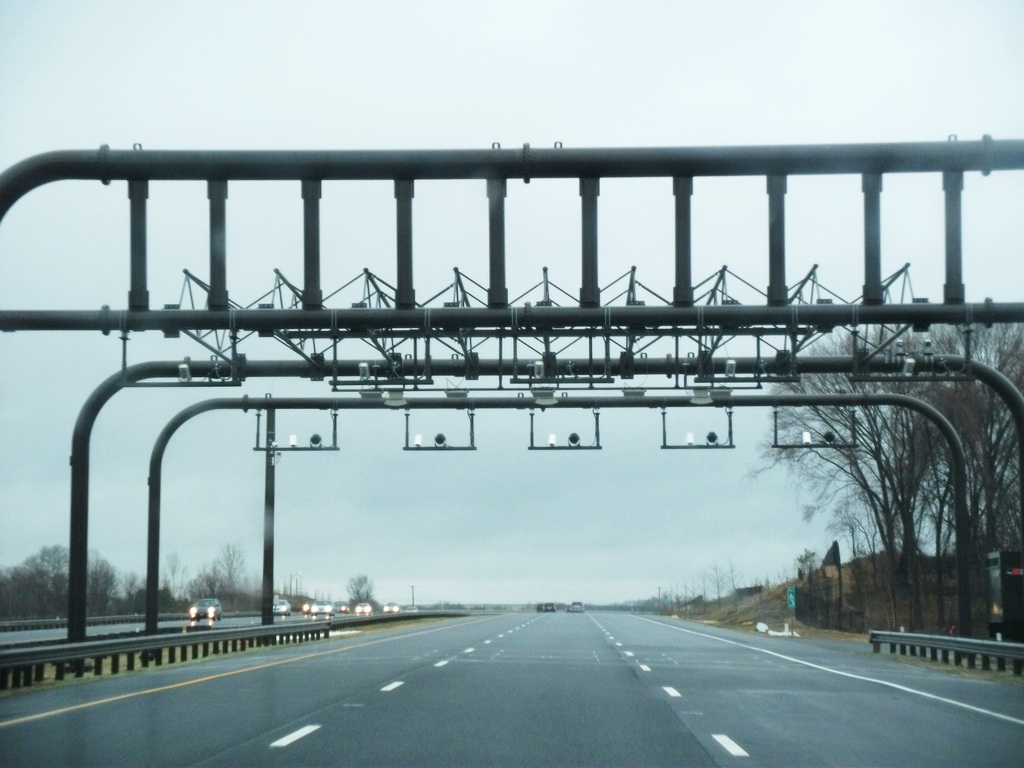COLLEGE PARK, Md. (December 12, 2019)—Motorists in Maryland may be aware of the cameras that enforce speed and red-light violations, but the state's tracking practices include other layers to assist in law enforcement efforts, and for traffic and planning purposes.
Through the different practices, Maryland collects both anonymous and identifiable information—depending on the method—about driving patterns, raising concerns for privacy advocates.
"I don't think it's really an issue of whether you have privacy in a particular moment in time," said Dave Maass, senior investigative researcher at the Electronic Frontier Foundation, a nonprofit that defends civil liberties in the digital age. "But rather whether the government—and companies—should be tracking you over time and space, and then storing and selling that information."
The Maryland Coordination and Analysis Center assists "federal, state, local and private-sector partners in the collection, analysis and dissemination of criminal and homeland security within Maryland," according to its mission statement.
Pursuant to that mission, the center oversees the state's license plate reader program.
420 license plate readers, 450,000,000 scans
There are 420 automatic license plate readers around the state as of 2018, according to data obtained by Capital News Service through a public information act request.
Readers capture information such as camera date, time and location with a digital image. The image can capture specific information such as a vehicle's make and model, its drivers and passengers, distinguishing features (bumper stickers or damage) and state of registration.
In 2018, there were 14 connected agencies—including the Maryland Transportation Authority, state police and other law enforcement entities—that collected data for the operations center. Combined, the license plate readers registered over 450 million scans, according to a mandatory yearly audit.
Data and images are then stored on a server at the Maryland Coordination and Analysis Center.
In accordance with a law passed in 2014, the scans cannot be stored for more than one year unless there is reasonable belief that they will become evidence in a specific criminal or other law enforcement investigation or action concerning the connected individual.
"I think it's way too long," Maass said of the retention period. "A year can result in a lot of information being collected on somebody in order to analyze their historical patterns."
The reader-collected data can be used to alert law enforcement officials that a captured plate recorded a hit based off a list of targeted plates related to crimes.
Personal data stored on the server is not accessible through the Public Information Act, and is only disseminated when an outside agency's formal request meets "need to know" and "right to know" standards, according to the program's guidelines.
Of the over 450 million scans in 2018, the Maryland Coordination and Analysis Center received 3,476 requests for the scanned information, and 2,179 resulted in the release of information.
In 2018, 81 of the systems were at fixed locations and 339 were mobile—meaning they were attached to law enforcement vehicles.
Privacy concerns
Maass said both varieties create privacy concerns for drivers. He said readers at fixed locations reveal driving patterns, such as routes and schedules.
Meanwhile, Maass said, mobile readers can be abused. He warned about a practice called "gridding," which involves law enforcement driving through neighborhoods or specific areas to collect information. Maass also said mobile readers open the opportunity for law enforcement to drive around until they receive a hit on the "hot list."
"If a police department put a police officer on every corner, and they were writing down all of your movements all the time, people would feel like they lived in an authoritarian state," Maass said. Automatic License Plate Readers "is just the computerized version of this."
The mobile readers provide an almost instantaneous result, Maryland Coordination and Analysis Center Director David Engel told Capital News Service. But Engel said the reading alone isn't enough for law enforcement to pursue the vehicle. The officer must have reasonable cause to stop a vehicle and verify the result through their computer or a dispatcher.
Despite the privacy concerns, Engel stands by the effectiveness of the program. He said the license plate readers serve as a tool to help law enforcement solve crimes, find criminals and identify stolen vehicles.
"It's for a multitude of reasons that this is invaluable," Engel said.
Other tracking methods
Other tracking methods the state uses are anonymous, and used for the purpose of monitoring and making informed decisions about traffic.
The state purchases traffic data from third-party companies to gather information that can be used for planning purposes, according to Michael Pack, the director of the Center for Advanced Transportation Technology.
The center, oftentimes called the CATT Lab, is at the University of Maryland and compiles and analyzes road data to help the state make development decisions, including infrastructure and construction projects.
"Most states can buy data or produce data, but struggle to analyze the data," Pack said. "We make the tools to analyze the data."
Collecting data from cell phones
In September, the Board of Public Works unanimously approved another form of traffic data collection.
Transportation data company StreetLight Data will compile the information based on cell phone data on a one-year contract, State Highway Administration spokesman David Abrams said.
The information will have a specific focus on the Baltimore Beltway-Interstate Route 70 interchange near Woodlawn where three bridges intersect. The data is not collected in real time and takes up to two months for StreetLight to receive, Abrams said.
"The tool is solely used to monitor traffic, not individual drivers. The data is completely anonymous at the point that it is captured, and completely anonymous when it gets to (the State Highway Administration)," Abrams said. "This data is for planning purposes to better understand where there are traffic issues and how to address them."
Abrams also said the live online traffic streams of certain road segments online are not recorded.
Images captured at toll facilities in the state are protected by a Maryland law that prohibits information being released "except to the individual named in the record (the customer/citizen) or for the purposes of investigating or prosecuting a violation of failure to pay a toll in connection with the electronic toll collection system," Maryland Transportation Authority spokeswoman Kelly Melhelm said in an email.
Individual jurisdictions, not the state, oversee other cameras that are prevalent on roadways, such as those that monitor violations for speeding, running a red light or driving past a school bus while students are exiting.
Maryland Uses Surveillance, Data To Track Motorists, Traffic

An electronic toll gantry on Route 200, the InterCounty Connector. Photo by Doug Kerr with Flickr Creative Commons License.

